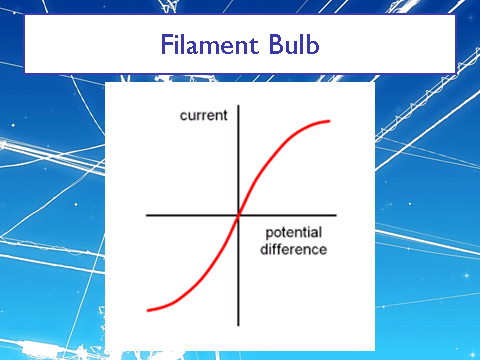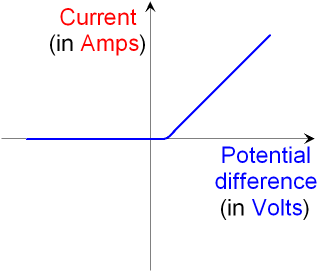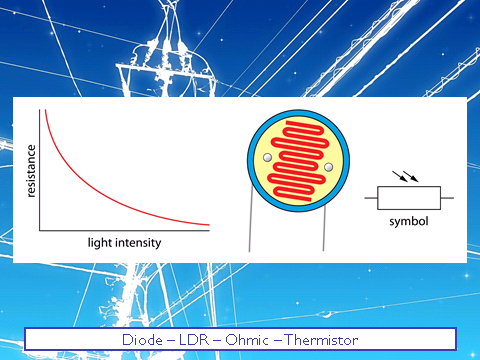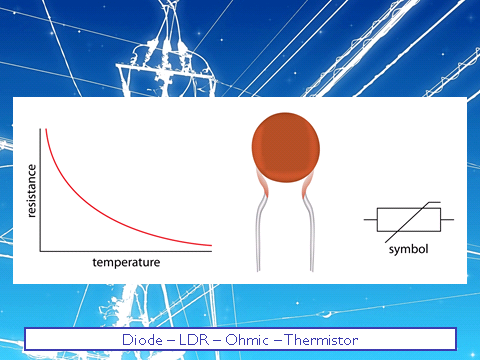Non Ohmic Resistors
Non Ohmic Resistors
Some resistors do not follow Ohm’s law, these are called non-Ohmic resistors. This means that the resistance changes when the current changes.
There are four non-Ohmic resistors that you need to know, the first is a filament lamp/bulb.
The graph (which you need to be able to recognise and draw) is shown below.
The resistance increases as the temperature increases. Remember how resistance is caused when electrons collide with the ions? Well, as the filament gets hot the ions move and vibrate more or faster. This causes more collisions with the flowing electrons, hence an increased resistance.
Second is a diode.
The graph (which you need to be able to recognise and draw) is shown below.
The current through a diode flows in one direction only. The diode has a very high resistance in the reverse direction.
LDR
LDR - light dependent resistor.
The graph (which you need to be able to recognise and draw) is shown below.
You can see from the graph that the resistance falls as the light intensity increases.
LDRs can be used for switching lights on automatically when it gets dark.
Thermistor
The graph (which you need to be able to recognise and draw) is shown below.
You can see from the graph that the resistance falls as the temperature increases.
Thermistors can be used in the home for thermostats to control the central heating.
Testing
In order to identify a non-ohmic resistor, you need to go through each of the properties to see if there are any changes.
For example, if you reverse the cell and suddenly there is no current, then it must be a diode.
Similarly, if the resistance changes when you cover the component with your hand, then it must be an LDR.
Can you work out tests for the other two?
- Name an application for thermistors
- Your answer should include: thermostat / thermostats
- What happens to the current in an LDR when the light intensity increases?
- current increases



